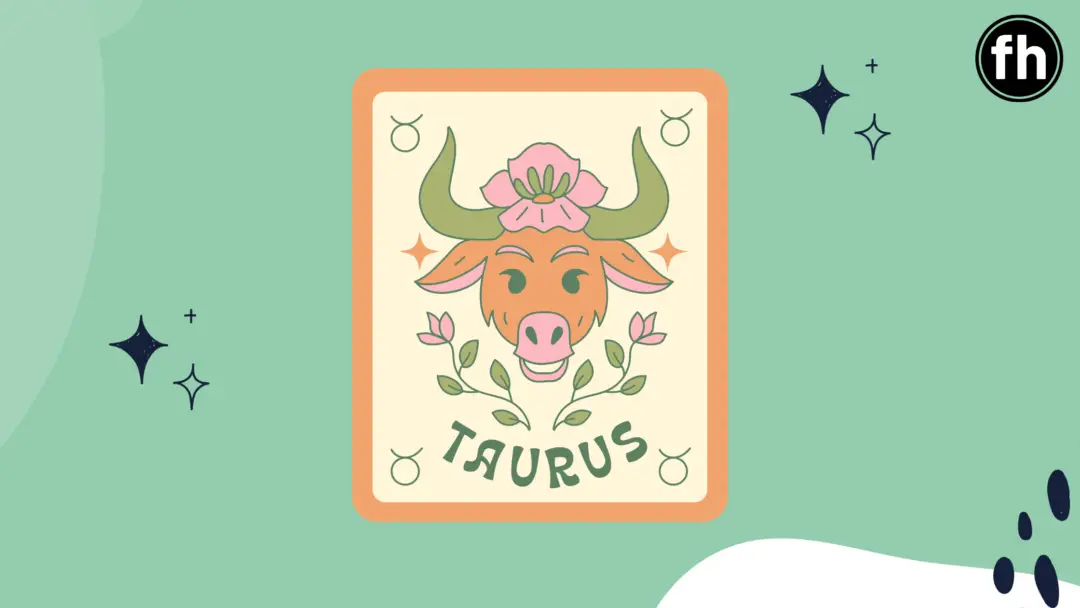Thailand offers a rich tapestry of hobbies steeped in culture and history, from traditional practices to modern pastimes.
Muay Thai, known as “The Art of Eight Limbs,” is one of the most iconic activities you can engage in. It has a history dating back over 2,000 years and remains a vital part of Thai culture today. Training camps across the country allow you to immerse yourself fully in this martial art.
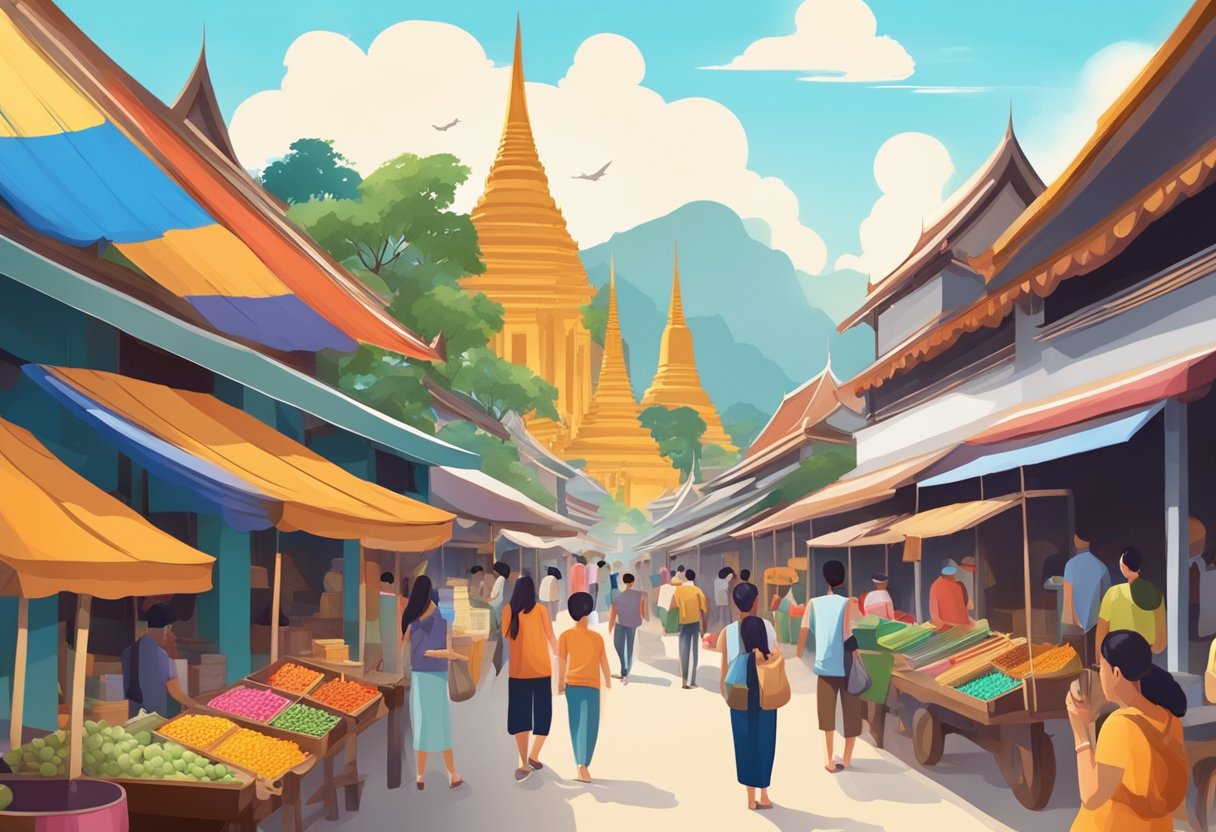
For those passionate about culinary experiences, taking a Thai cooking class offers an opportunity to learn how to create authentic and delicious Thai dishes.
You can explore local markets, select fresh ingredients, and master the techniques that make Thai cuisine so beloved worldwide. This hands-on experience is a fantastic way for food enthusiasts to dive into Thai culture.
Thailand’s beautiful landscapes provide numerous options for adventure enthusiasts.
Ziplining through the treetops of Chiang Mai, rock climbing in Krabi, or scuba diving in the vibrant waters of Phuket allow you to explore the natural beauty and diverse ecosystems.
These activities not only offer physical excitement but also a chance to connect with Thailand’s stunning environments.
Read more about Muay Thai, ziplining in Chiang Mai, and Thai cooking classes.
The Essence of Thai Culture
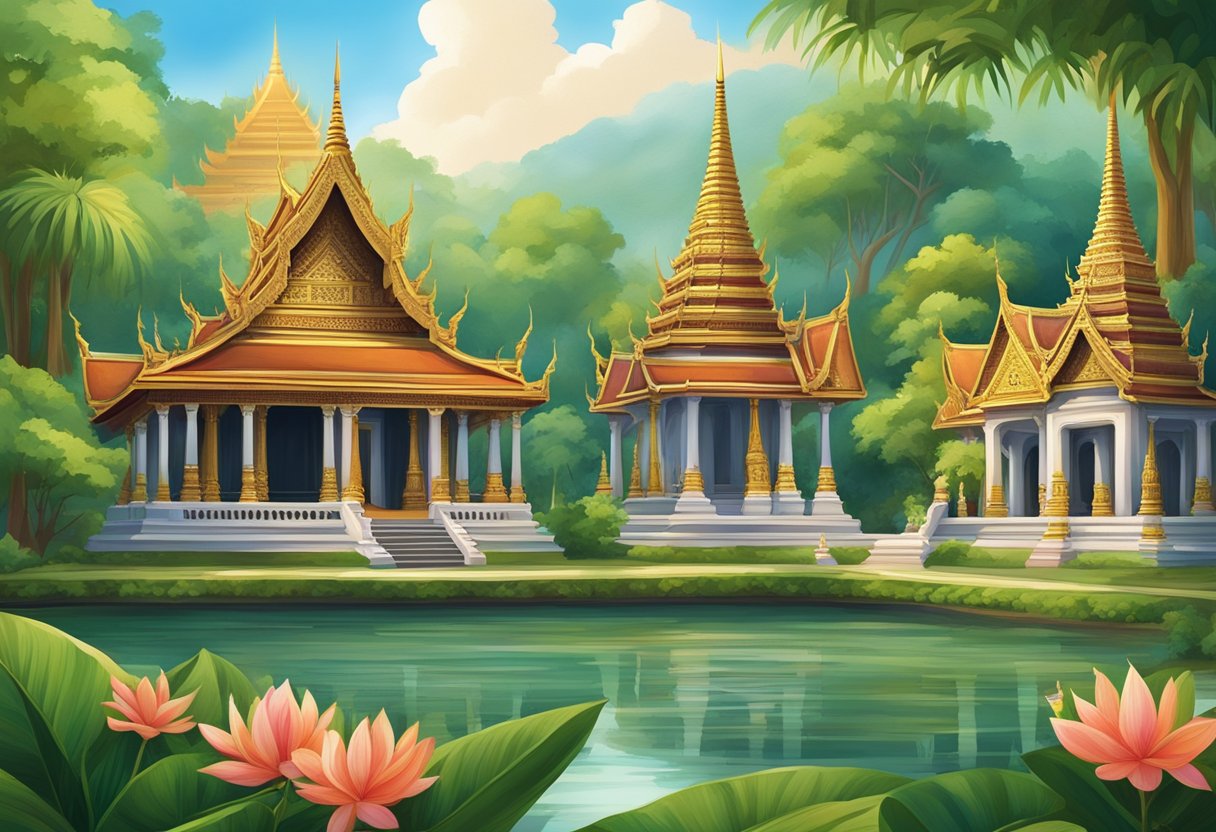
Thai culture is deeply rooted in its rich history and profound spiritual practices. The influence of Buddhism, traditional arts, and the Thai language shape the cultural heritage, providing a captivating insight into the daily lives of Thai people.
Buddhism and Cultural Practices
Buddhism plays a central role in Thai culture, influencing numerous aspects of daily life. Temples, known as wats, are integral, serving as community centers for religious activities and gatherings.
Monks, who maintain a revered status, perform various rituals that include blessing ceremonies and morning alms collection.
Thai festivals such as Loy Krathong and Songkran reflect Buddhist beliefs and practices. These events provide a glimpse into the country’s spiritual life, emphasizing values of merit-making and community cohesion.
You may also notice the presence of spirit houses outside homes and businesses, which are part of the native animist traditions harmonizing with Buddhism.
Traditional Thai Arts and Handicrafts
Thai art is known for its intricate designs and strong connections to religious and cultural themes. Traditional art forms include classical dance, elaborate temple murals, and handcrafted textiles.
These art forms often depict stories from Buddhist scriptures and Thai folklore, embodying the cultural heritage of the nation.
Handicrafts like silk weaving, pottery, and wood carving are not only artistic but also functional.
These crafts are typically passed down through generations, preserving ancient techniques and styles. By supporting local artisans, you contribute to the ongoing legacy of these traditional practices, helping sustain Thailand’s cultural economy.
Thai Language and Its Influence on Culture
The Thai language profoundly impacts cultural expression and social interactions. Central to its uniqueness is the use of tones—it features five distinct tones that can change the meaning of words significantly.
Thai scripts, derived from Old Khmer, are used in various literary and artistic expressions.
Politeness and respect, key Thai values, are embedded in language use. The common greeting “Sawadee” often includes a respectful gesture called the “wai.”
Pronouns and forms of address change based on age, status, and familiarity, reflecting the societal importance of hierarchy and respect. Understanding these nuances is crucial for deeper immersion in Thai society.
Historical Journey Through Thailand

Thailand boasts a wealth of historical treasures, offering visitors a chance to explore ancient temples, majestic palaces, and historically significant cities. Each destination provides a unique glimpse into Thailand’s rich cultural heritage and storied past.
Ancient Temples and Historical Parks
Thailand’s ancient temples, locally known as “Wats,” are architectural marvels and significant religious sanctuaries.
You can explore Wat Pho, known for its giant reclining Buddha, Wat Arun, famous for its iconic riverside location, and Wat Phra That Doi Suthep in Chiang Mai, offering breathtaking views and spiritual experiences.
Historical parks like Ayutthaya Historical Park and Sukhothai Historical Park are UNESCO World Heritage Sites, preserving ancient ruins that tell the stories of Thailand’s past empires.
The Grand Palace and Its Magnificence
The Grand Palace in Bangkok is an essential destination to understand Thailand’s royal heritage. Built in 1782, the palace served as the official residence of the Kings of Siam.
Within its complex, you will find the Temple of the Emerald Buddha or Wat Phra Kaew, which houses a revered emerald statue of the Buddha.
The architectural grandeur and intricate details of the palace structures reflect the skills and artistry of Thai craftsmen.
Ayutthaya and Sukhothai: Windows to the Past
Ayutthaya and Sukhothai are cities of great historical importance. Ayutthaya was the second capital of the Siamese Kingdom and is now an archaeological site that provides insights into a once-thriving metropolis.
The city’s historical park exhibits ruins of temples and palaces, giving a sense of its former grandeur.
Sukhothai, Thailand’s first capital, is celebrated for its historical park, which includes well-preserved ruins of temples, palaces, and sculptures.
Whether it’s walking through the grandiose remains of Ayutthaya or exploring the serene landscapes of Sukhothai, these locations offer a profound historical journey.
Culinary Adventures: Thai Cuisine
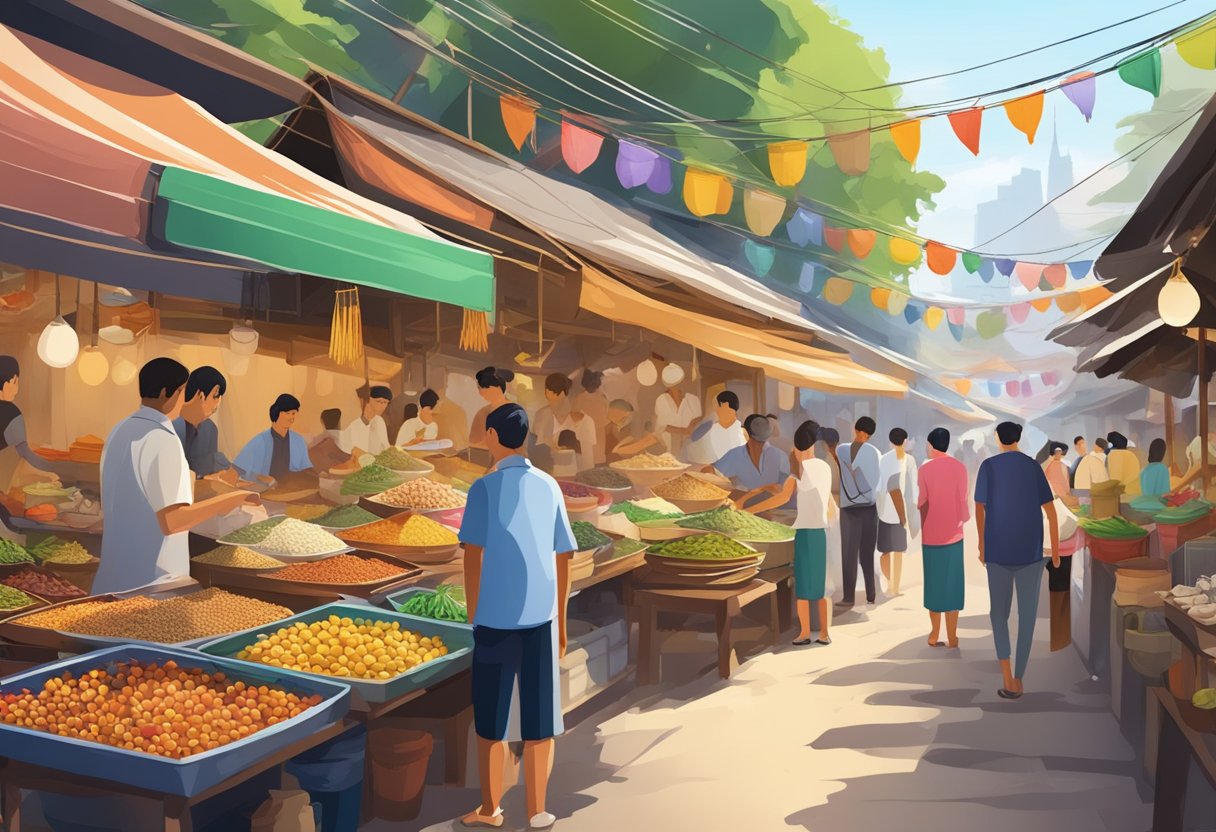
Thai cuisine is renowned for its vibrant flavors, diverse regional dishes, and unique culinary techniques. From the bustling street food vendors to authentic and iconic Thai dishes, there is a gastronomic experience waiting to be explored.
From Street Food to Authentic Dishes
In Thailand, street food is an integral part of daily life, offering delicious and affordable meals.
You can find popular dishes like Pad Thai, Tom Yum, and Som Tum at numerous food stalls.
These street vendors often prepare food right in front of you, providing a sensory experience that showcases the rich culinary traditions of the country.
The charm of Thai street food lies in its authenticity and flavor. Whether you’re wandering through the streets of Bangkok or the markets of Chiang Mai, street food vendors bring the essence of Thai cuisine to life with fresh ingredients and traditional recipes.
Iconic Thai Dishes and Their Origins
Thai cuisine consists of several iconic dishes known worldwide for their unique flavors and cultural significance.
Pad Thai, for example, is a stir-fried noodle dish that combines flavors of tamarind, fish sauce, and peanuts. It epitomizes the balance of sweet, salty, and tangy tastes.
Tom Yum, a hot and sour soup, is another quintessential Thai dish.
Originating from Central Thailand, it features aromatic ingredients like lemongrass, kaffir lime leaves, and galangal. The combination of these herbs with shrimp or chicken creates a savory and refreshing bowl of soup.
Many authentic Thai dishes have roots in cultural and historical influences, integrating flavors from neighboring countries. This blend of traditions has resulted in a rich and varied culinary landscape, offering dishes with deep historical significance and distinctive taste profiles.
Cooking Classes and Culinary Tours
For those interested in delving deeper into Thai cuisine, participating in a Thai cooking class or culinary tour can be an enriching experience.
Classes usually include a visit to local markets, where you can select fresh ingredients and learn about essential herbs and spices used in Thai cooking.
In cities like Bangkok and Chiang Mai, numerous cooking schools offer hands-on lessons led by expert chefs.
These classes often cover the preparation of traditional dishes such as Green Curry and Mango Sticky Rice.
Culinary tours provide an immersive experience, allowing you to explore regional specialties and meet local chefs. Touring food markets, sampling authentic dishes, and learning cooking techniques are excellent ways to deepen your appreciation for Thai cuisine.
Check out our Huge List of Food Hobbies for more awesome food and cooking-related hobby ideas!
Festivities and Celebrations in Thailand
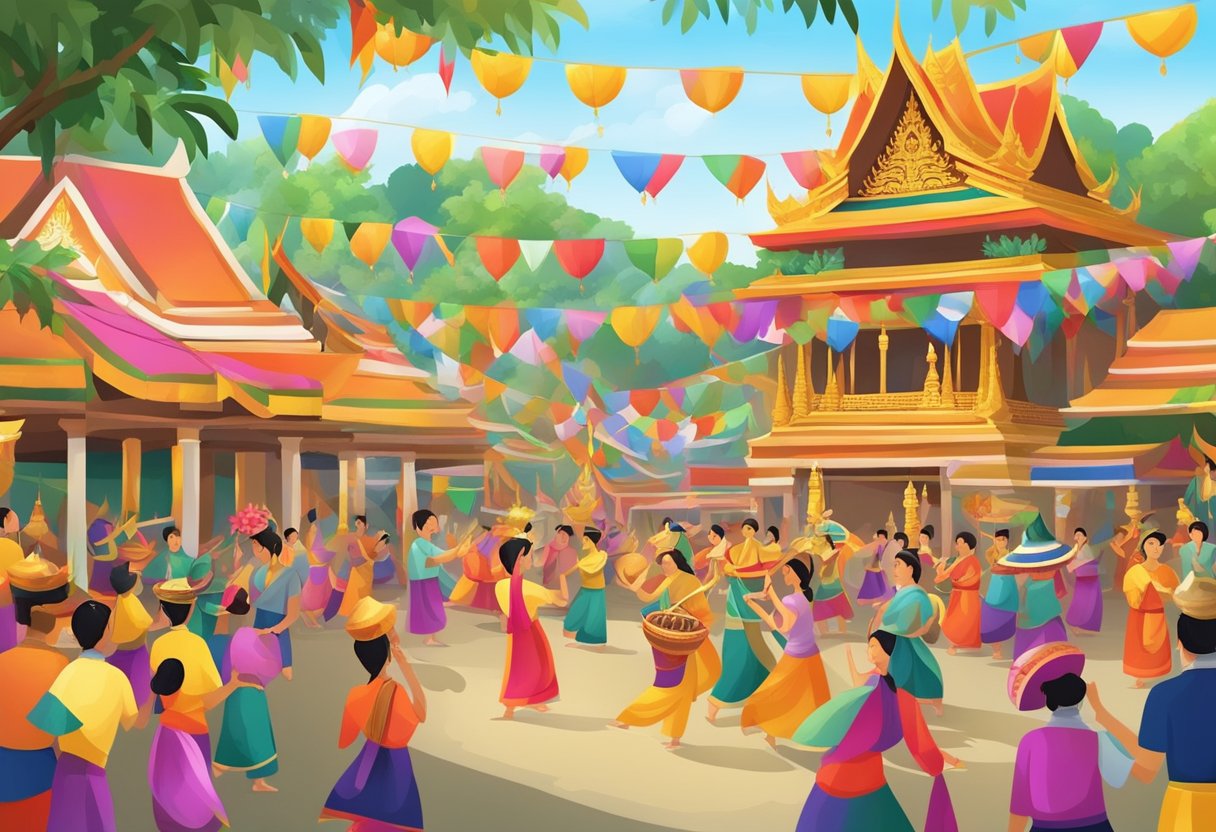
Thailand’s festivals are an essential part of its rich cultural tapestry, with events like the exuberant Songkran Festival and the mesmerizing Loy Krathong. These celebrations offer unique experiences, ranging from vibrant water fights to enchanting lantern releases.
Songkran Festival and Water Fights
Songkran, celebrated from April 13th to 15th, marks the traditional Thai New Year. This festival is renowned for its water fights, symbolizing the washing away of bad luck and sins.
Chiang Mai and Bangkok are the most popular spots to participate.
During Songkran, streets turn into lively arenas where locals and tourists engage in water battles using buckets, water guns, and hoses. Temples also hold elaborate ceremonies, emphasizing purification and renewal.
Loy Krathong: The Festival of Lights
Loy Krathong, usually held in November, involves floating decorated baskets (krathongs) on water to honor the water goddess.
This beautiful festival features lantern releases in some regions, such as Yi Peng in Chiang Mai, where thousands of paper lanterns fill the night sky.
These lanterns, or khom loi, symbolize the release of worries and misfortunes. Participants often include flowers, candles, and incense in their krathongs, creating a magical spectacle on water bodies across Thailand.
Cultural Festivals and Public Holidays
Thailand’s cultural festivals and public holidays reflect its diverse traditions and Buddhist heritage.
For instance, the Makha Bucha celebrates the gathering of 1,250 enlightened disciples to hear Buddha’s sermon. This day involves temple visits, prayers, and candlelit processions.
The Candle Festival in July, held in Isaan’s major cities, showcases colossal wax sculptures created by artists worldwide, blending traditional and contemporary art forms.
The Pattaya Music Festival in March offers a different kind of celebration, featuring music, food, and beachside fun, making it a must-attend event for music lovers.
Check out our full post on Travel Hobbies, for hobby ideas on getting out and exploring the world.
Experiencing Thai Nature and Adventure

Thailand offers a plethora of opportunities for those seeking to experience its natural beauty and thrilling adventures.
From picturesque beaches and marine life to serene national parks and immersive wildlife sanctuaries, Thailand has something to offer every nature and adventure enthusiast.
Beaches, Islands, and Marine Life
Thailand’s coastline is renowned for its stunning beaches and rich marine life.
Head to Phuket for diving adventures, where the underwater scenes are teeming with vibrant coral reefs and diverse sea creatures.
The clear waters around the islands of Krabi and Railay are perfect for snorkeling and rock climbing adventures by the cliffs.
You can also explore the magical caves in Phang Nga Bay via a boat tour, offering a breathtaking landscape that feels almost surreal.
Tourists often flock to Chao Phraya River for a tranquil cruise, enjoying both the waters and the picturesque surroundings.
Hiking and Exploring National Parks
Thailand’s national parks are a haven for hiking enthusiasts.
Khao Sok National Park in Surat Thani is home to a 160-million-year-old rainforest, offering thrilling trekking experiences through diverse flora and fauna. This park features limestone formations and the serene Chiao Lan Lake, perfect for boat tours.
In northern Thailand, you can find Pai Canyon, which is great for panoramic hikes offering stunning views.
Don’t miss the seven-tiered Erawan Waterfall in the western region, where you can take a dip in crystal-clear pools amid tranquil settings.
Elephant Sanctuaries and Wildlife Conservation
For those interested in wildlife, Thailand’s elephant sanctuaries provide a unique and ethical way to connect with these majestic creatures.
In Chiang Mai, visit Elephant Nature Park, which focuses on rescue and rehabilitation. This sanctuary strives to protect elephants in a natural habitat, allowing visitors to observe them up close in an ethical manner.
Additionally, wildlife experiences extend beyond elephants.
Thailand’s jungles and parks, such as Khao Yai National Park, are teeming with diverse animals, including gibbons, hornbills, and even the elusive wild elephants.
Through guided tours, you can learn about ongoing wildlife conservation efforts while enjoying the natural splendor.
Expressive Arts and Cultural Activities
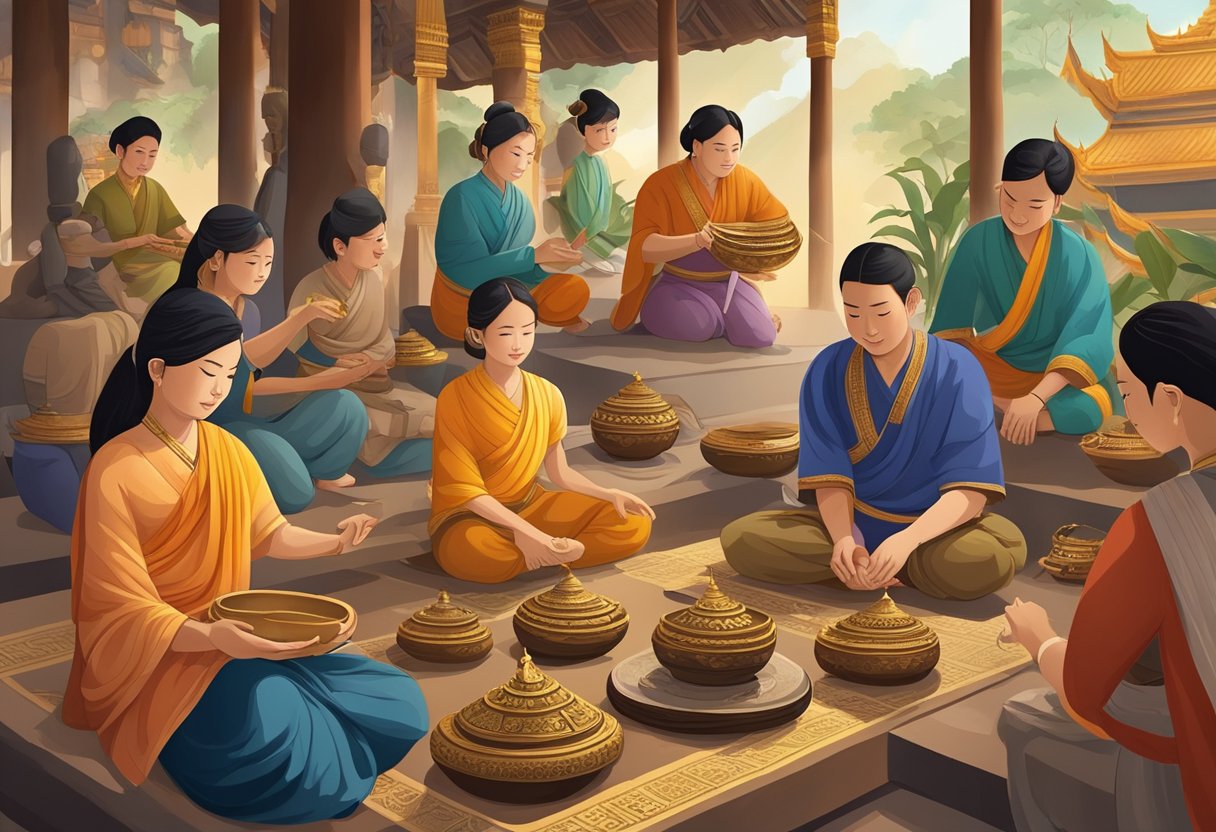
Thailand is renowned for its rich cultural heritage. You’ll find an array of engaging activities, from the soothing practice of Thai massages to the intricate craft of Thai silk weaving, and the lively performances of traditional Thai dance and music.
Thai Massages and Wellness Retreats
Experience the healing art of traditional Thai massage, a deeply rooted practice in Thai culture.
Thai massage combines acupressure, Indian Ayurvedic principles, and assisted yoga postures.
You can find wellness retreats across the country, particularly in Chiang Mai and Bangkok, offering these rejuvenating treatments.
The traditional Thai massage techniques focus on energy lines known as “sen” and aim to adjust the body’s energy balance. This practice is not just about physical relaxation; it also fosters mental clarity.
Additionally, many wellness retreats incorporate herbal therapies, meditation classes, and nutritional guidance, providing a holistic approach to health and well-being.
Crafting Thai Silk and Pottery
Thai silk weaving is a centuries-old craft showcasing exquisite craftsmanship.
The northeastern region, especially around Khon Kaen, is famous for its high-quality Thai silk. You can visit local weaving villages where artisans still use traditional handlooms to create intricate patterns.
Pottery is another significant art form in Thailand.
The art of pottery making can be explored in northern provinces like Chiang Mai and Lampang. Thai ceramics often feature complex designs and vibrant colors, reflecting the country’s artistic heritage.
Workshops are available for visitors, allowing you to learn and practice the techniques used by Thai potters, from molding to glazing.
The Vibrant World of Thai Dance and Music
Thai dance and music are integral parts of the nation’s cultural fabric.
Classical Thai dance, such as Khon, is performed in elaborate costumes and features dramatic gestures and movements that narrate historical tales.
These performances can often be witnessed during festivals and at cultural centers in major cities like Bangkok and Chiang Mai.
Traditional Thai music utilizes unique instruments like the ranat (xylophone), khim (dulcimer), and pi (reed flute), contributing to its distinct sound.
Attending a Thai cultural show provides deep insight into these performing arts.
Another captivating aspect is Muay Thai, a traditional martial art that intertwines combat skills with rhythmic dance movements.
You can attend matches or even join training camps to engage directly with this vibrant cultural practice.
Practical Guide to Enjoying Hobbies in Thailand
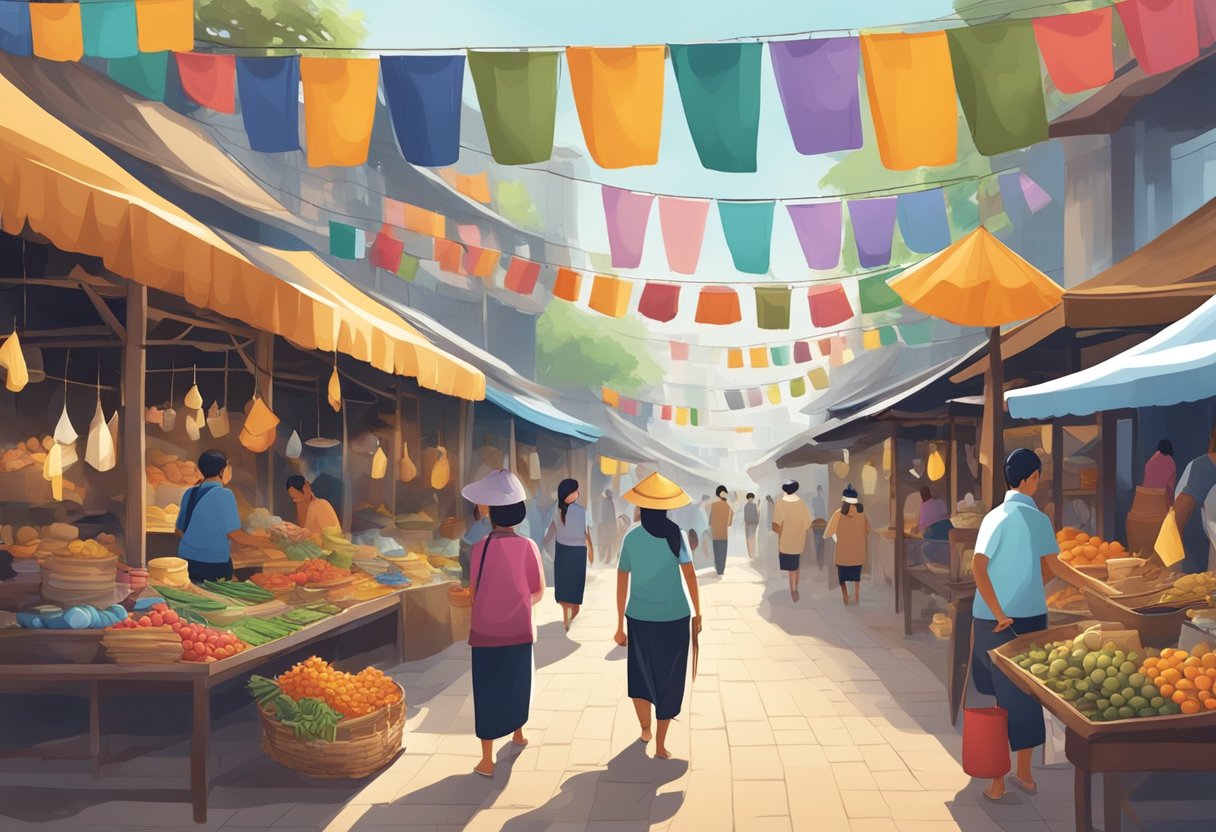
Engaging in hobbies while in Thailand offers a rich experience, from exploring markets teeming with crafts to understanding local customs for a safe and respectful stay. Learn the nuances of these practicalities to enhance your time in Thailand.
Shopping for Crafts at Markets and Bazaars
You can find a plethora of unique crafts at Thailand’s vibrant markets.
Chatuchak Weekend Market in Bangkok is a prime destination, featuring everything from handcrafted jewelry to traditional Thai silks.
Visit Damnoen Saduak Floating Market for a more authentic experience where vendors sell directly from boats.
Night markets across the country offer a different yet equally exciting shopping environment, often including handmade goods and local snacks.
Remember to bring cash, as many vendors do not accept credit cards, and feel free to haggle to get the best price.
Safety and Etiquette for Travelers
Travelers should prioritize safety and etiquette to ensure a smooth and enjoyable experience.
When visiting temples, dress modestly to respect local customs.
Keep a watchful eye on your belongings, especially in crowded areas like Bangkok’s markets.
Public transportation can be a convenient option, but always be cautious of your surroundings.
Avoid confrontations and raising your voice, as Thai culture values calm and respectful interactions.
Washing your feet when you return from a day out, especially after wearing flip-flops, is a common practice owing to the cultural significance placed on cleanliness.
Living as an Expat: What to Expect
Living in Thailand as an expat requires adapting to local norms and embracing the cultural tapestry of the country.
You’ll find the local lifestyle laid-back yet vibrant, with a strong sense of community.
English is widely spoken in urban areas, but learning basic Thai phrases can go a long way in daily interactions.
Many expats choose to settle in Bangkok, drawn by the city’s modern amenities and rich cultural life.
Daily life will include adapting to new routines and embracing local markets for fresh produce and handmade goods.
Understanding local customs, such as removing shoes before entering homes and being mindful of your feet, will help you integrate more smoothly.
Frequently Asked Questions
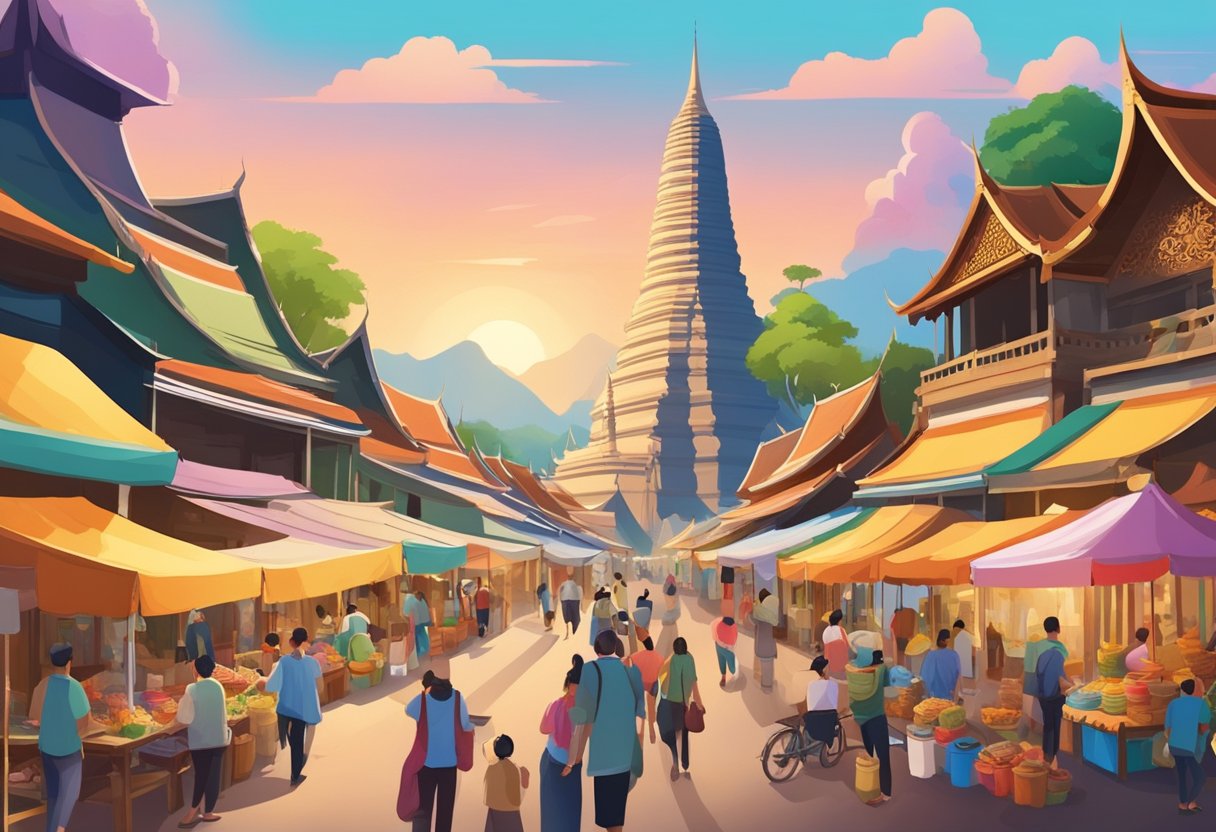
This section covers essential aspects of Thai hobbies and cultural attractions. From local activities to the influence of Muay Thai and traditional crafts, discover what makes Thailand’s culture unique.
What are the top activities that reflect the cultural heritage of Thailand?
Exploring the Grand Palace and Wat Pho Temple in Bangkok offers insight into Thailand’s rich history and architectural beauty.
Additionally, a visit to the ancient Siamese capital of Ayutthaya unveils centuries-old ruins and temples.
Which hobbies are most prevalent among locals in Thailand?
Thai people enjoy hobbies such as gardening, traditional dance, and crafting.
Thai cooking classes are popular both as a leisure activity and a way to preserve culinary traditions.
Many locals also engage in Muay Thai, reflecting its cultural prominence.
What kind of cultural attractions should tourists not miss in Thailand?
Tourists should experience the vibrant festivals, such as Songkran and Loy Krathong.
Visiting the Emerald Cave in Koh Mook offers a unique natural wonder.
Additionally, a tour of local markets provides an authentic glimpse into Thai daily life and traditional crafts.
How does traditional Muay Thai influence Thai culture?
Muay Thai is more than a sport in Thailand—it’s a vital part of the national identity.
Engaging in Muay Thai teaches discipline, respect, and physical fitness. It has cultural ceremonies and rituals that connect participants with Thai heritage.
What aspects of Thai culture are most appreciated by visitors?
Visitors often appreciate Thai hospitality, known as “sanook” which emphasizes fun and joy in daily life.
The diverse culinary scene, with street food and local delicacies, also receives high praise.
Additionally, Thailand’s elaborate temples and rich historical landmarks captivate tourists.
Can you list some traditional crafts or hobbies unique to Thailand?
Traditional Thai crafts include silk weaving, pottery, and wood carving. Learning to make offerings and decorations for festivals is also a cherished hobby.
These crafts not only offer creative expression but also keep Thailand’s cultural heritage alive.





